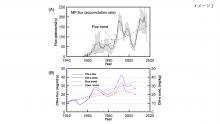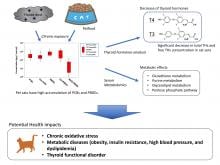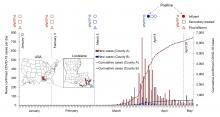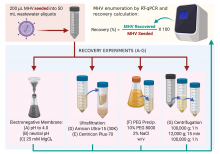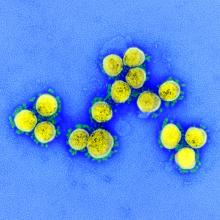Science of the Total Environment
News
29 Sep 2022
A simple and economical method of detecting SARS-CoV-2 viral loads in wastewater with high sensitivity has been developed, expanding the use of wastewater-based epidemiology for tracking the virus in populations.
02 Sep 2022
Even a small temperature drop in the tropical climate of Singapore increases the risk of heart attack among people aged 65 and above, say researchers from Duke-NUS Medical School, Singapore’s National Environment Agency and collaborators.
26 Jul 2022
Exposure to persistent organic pollutants in pet cats lowers blood thyroid hormone levels and causes chronic oxidative stress.
21 Jun 2022
Researchers from the Institute of Industrial Science, The University of Tokyo, find that the risk of human–elephant conflict in Thailand is likely to shift with climate change

13 Apr 2022
• Effects of gestational bisphenol A exposure were compared between rat dams and their offspring.
• Bisphenol A affected the dams' circadian rhythm, immune response, and insulin resistance.
• Nevertheless, at the multi-omics levels (transcriptome and lipidome), the impact on the dams was less than on their offspring.
• Multi-variates analysis successfully differentiated the multi-omics effects between dams and their offspring.
23 Nov 2021
A joint research team at the Division of Biotechnology, DGIST, confirmed that microplastics(MPs) ingested orally accumulate in the brain and act as neurotoxic substances.

29 Sep 2020
Climate warming will alter marine community compositions as species are expected to shift poleward, significantly impacting the Arctic marine ecosystem.
26 Aug 2020
A group of scientists have detected genetic material from SARS-CoV-2 in untreated wastewater samples collected in April 2020 from two wastewater treatment plants in Louisiana, USA.
12 Aug 2020
A group of researchers have demonstrated that, from seven methods commonly used to test for viruses in untreated wastewater, an adsorption-extraction technique can most efficiently detect SARS-CoV-2. This gives us another tool to detect the presence and spread of the COVID-19 pandemic
25 May 2020
Wastewater could be used as a surveillance tool to monitor the invasion, spread and eradication of COVID-19 in communities.
Events
Sorry, no events coming up for this topic.
Researchers
Sorry, no researchers coming up for this topic.
Giants in history
Sorry, no researchers coming up for this topic.


